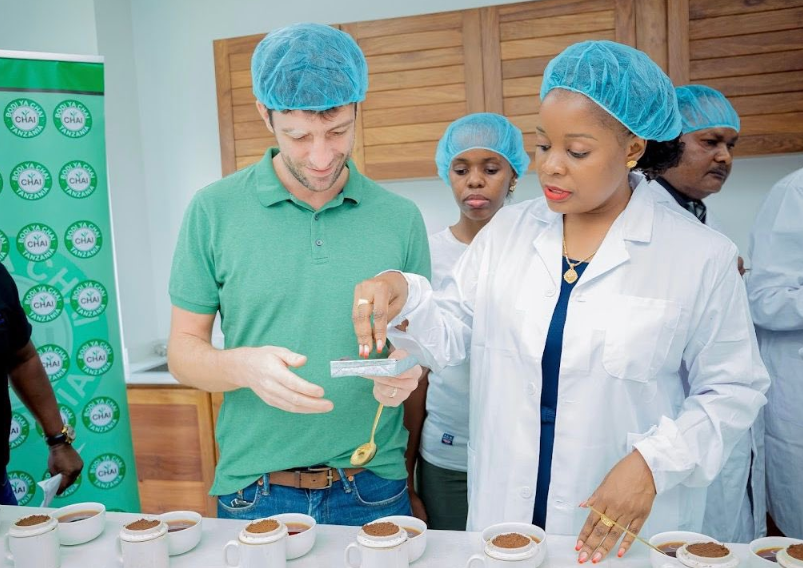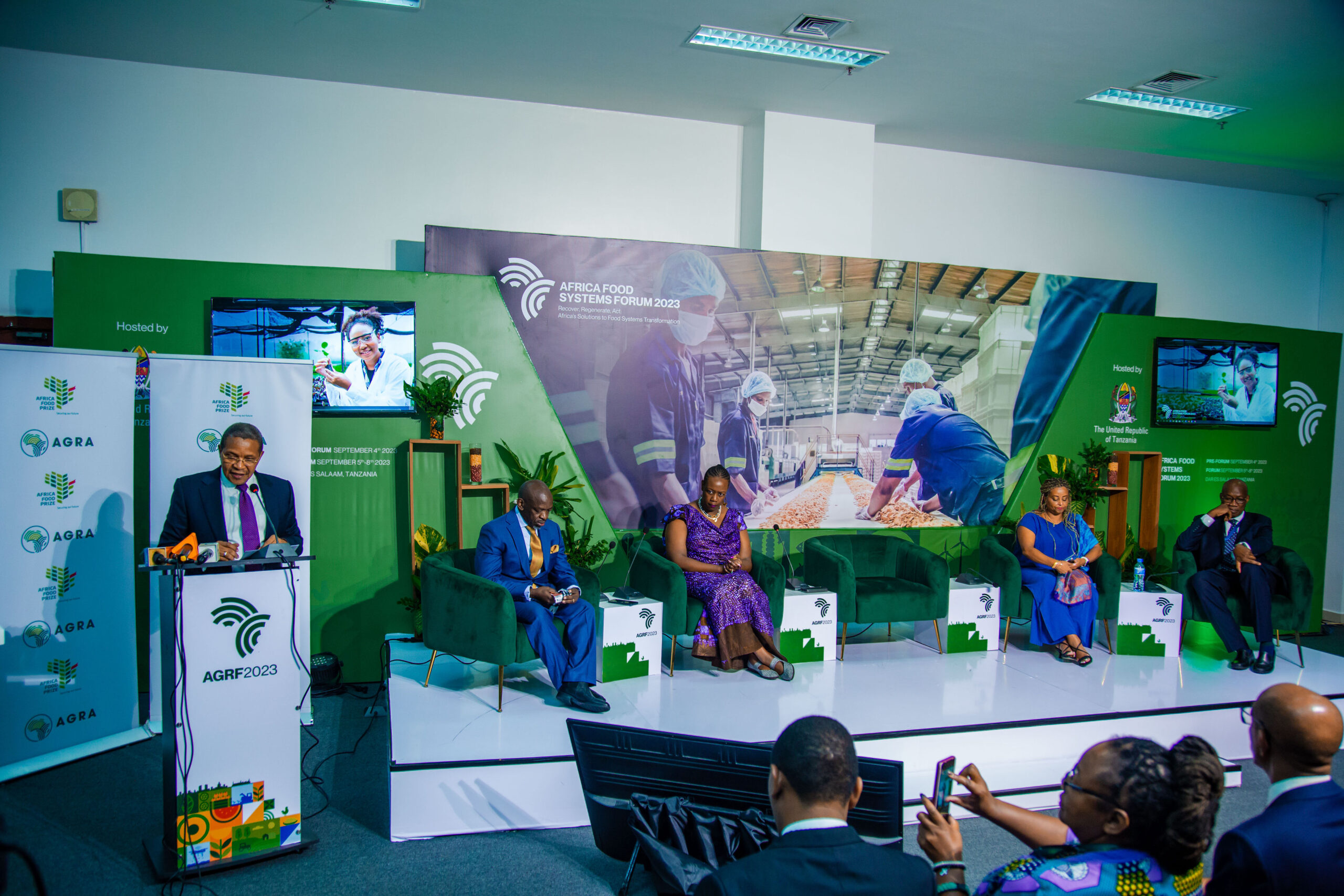Over 90% of Fertilizer Used in Tanzania is Imported, with Less than 10% Produced Domestically.
Kilimokwanza.org Team
Critical challenges facing Tanzania’s agriculture were highlighted during the significant 10th Annual Agricultural Policy Conference held in Dodoma and at the African Food Systems Conference on August 6, 2023, at the Julius K. Nyerere International Convention Centre in Dar Es Salaam. Alarming statistics indicated that more than 90% of Tanzania’s fertilizer imports come predominantly from countries like Russia, whereas less than 10% are manufactured domestically. This stark imbalance underscores a dependency on international sources that poses risks to the country’s agricultural stability and self-sufficiency.
The ongoing geopolitical tensions have exacerbated the challenges of relying heavily on imports. Disrupted supply chains and soaring prices have made fertilizers more expensive and scarcer, posing serious threats to food security across the continent. Various African governments, including Tanzania, have implemented subsidy programs to mitigate these effects and buffer the escalating costs.
Amid these discussions, Pinda highlighted the dangers of over-reliance on chemical fertilizers, comparing the necessity of balanced soil nutrition to human health. He warned that excessive use could lead to soil degradation and ultimately, decreased agricultural yields.
Dr. Agness Kalibata, President of AGRA , initiated a vigorous debate on this pivotal industry. She pointed out that fertilizers underpin half of the global food production but stressed the dire consequences of their limited availability, which often leads to underuse and reduced crop outputs. The need for Africa to ramp up its fertilizer production to diminish reliance on volatile international markets was a focal point of the discussion. Enhanced collaboration between African states and the private sector was essential for this endeavour.
In a deeper exploration of the issue, it was noted that Tanzania’s fertilizer consumption has risen from 250,000 tonnes in 2021 to 300,000 tonnes in 2022, according to the Food and Agriculture Organization (FAO). This increase was attributed to better access to credit facilities, governmental interventions, and higher crop market prices. However, the application rate per hectare remains alarmingly low at 15.858 kilograms, starkly below the recommended levels, perpetuating poor yields predominantly in regions dependent on traditional, low-input, rain-fed farming.
Tanzania’s primary fertilizers — urea, di-ammonium phosphate (DAP), calcium ammonium nitrate (CAN), and nitrogen-phosphorus-potassium (NPK) blends — are not utilized to their full potential. This underutilization contrasts sharply with neighbouring Kenya, which reported consumption of 700,000 tonnes in the same year. Despite these challenges, Tanzania has maintained a commendable food sufficiency level above 120% over the past five years, credited to robust food security strategies, crop diversification, and substantial governmental support.
To address the underlying issues of soil health and fertilizer efficacy, the integration of agricultural lime (agrolime), made from crushed limestone, has been proposed as a sustainable alternative. With significant limestone deposits, Tanzania is poised to decrease its dependency on imported fertilizers by stepping up the domestic production of agrolime. This material is crucial for correcting soil acidity, thereby enhancing fertilizer efficiency and ultimately improving crop yields.
Agrolime offers numerous advantages. It neutralizes soil acidity, making phosphorus and other nutrients more available, which leads to healthier soil and improved yields. Moreover, its usage can decrease the need for chemical fertilizers, thus reducing the risk of further soil degradation.
Interestingly, field observations in regions like Njombe have shown that some soils might not primarily require more fertilizers but rather lime treatment. This revelation underscores the diversity of soil health challenges across different regions and highlights the critical nature of understanding specific soil needs.
This insight calls for a significant shift in agricultural extension services and farmer education. Farmers must be educated about the importance of soil testing to identify precise requirements, ensuring that resources like agrolime are utilized where most needed, thereby optimizing soil health and agricultural productivity.
The push towards increasing agrolime production is about upscaling and ensuring accessibility for farmers, especially those in remote locations. Effective logistics, appropriate pricing strategies, and widespread education on application methods are vital for making agrolime a practical and beneficial solution for Tanzania’s agricultural challenges.
The SAGCOT Soil Health Partnership is leading initiatives to promote Tanzania’s lime and gypsum industry while actively advocating for increased domestic fertilizer production. This multi-faceted approach aims to secure Tanzania’s agricultural future, ensuring food security and economic stability through enhanced soil health and sustainable farming practices.
“It is very important for all farmers to take care of the health of the soils, just as it is important for humans to take care of themselves so that they become productive,” emphasizes Mr. Geoffrey Kirenga, CEO of the Southern Agricultural Growth Corridor of Tanzania (SAGCOT). His assertion underscores the critical need for sustainable agricultural practices in Tanzania, reflecting SAGCOT’s comprehensive strategy to enhance soil health and agricultural productivity.
Kirenga further elaborates on the initiatives undertaken by SAGCOT, stating, “We have actually developed the value chain for soil improvement materials like lime and also other materials like gypsum when needed. A farmer now will be able to get that material.” This initiative is part of a broader effort to combat soil degradation across Tanzania by making essential soil amendments more accessible to farmers, which is crucial for improving crop yields and overall agricultural output.
Highlighting the potential impact of these initiatives, Kirenga provides a striking example: “The farmer that has taken care of his soil, the productivity for maize in the Southern Highlands can increase from the current levels of 1.3 tons per hectare to 12 tons per hectare.” This statement not only illustrates the dramatic benefits of proper soil management but also serves as a motivational call to action for farmers throughout the region.
SAGCOT’s commitment to improving soil health is part of a larger vision to transform Tanzania’s agricultural sector. Established in 2010 as a public-private partnership, SAGCOT aims to boost agricultural productivity, ensure food security, and achieve environmental sustainability by commercializing smallholder agriculture. The initiative has undertaken significant steps, such as promoting the use of agricultural lime (agro-lime) to address soil acidity, which has been a major focus of their soil health program.
The organization has made considerable strides recently, including a large-scale soil testing initiative in the Ihemi Cluster involving 3,500 smallholder farms across 100 villages. This project is pivotal for identifying and addressing different regions’ specific soil health needs, enabling targeted interventions that enhance productivity and sustainability.
SAGCOT’s efforts are geared towards immediate agricultural gains and long-term sustainability, ensuring that the agricultural value chain in Tanzania is robust, equitable, and environmentally conscious. Through these efforts, SAGCOT is actively working to revolutionize food security and economic stability in Tanzania, setting a precedent for sustainable agricultural practices in Africa.
* Beda Msimbe and Anthony Muchoki contributed to this report.

